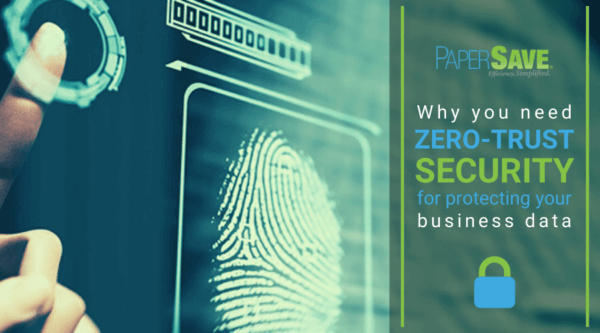Today’s hyper-connected world affords businesses countless opportunities to expand into new markets and improve productivity. But the rapid proliferation of data and
digital transformation has also led to an exponential increase in security risks. Digital data is now the most valuable commodity in the world, and protecting it starts with addressing the
weakest link: employees.
How zero-trust security works
Despite the ominous-sounding term, zero-trust security isn’t about not trusting anyone. Rather, it revolves around a strict methodology for verifying every individual and device connecting to a network. There’s no specific technological solution associated with it either since it’s more about process, policy, and people. However, various security platforms exist to make it easier to implement and keep track of who’s accessing your network and what they have access to.
In a nutshell, zero-trust security is about verification and giving employees access only to the apps and data they need to do their jobs. By contrast, the conventional IT security framework revolves around the castle-and-moat analog, in which everyone connected to the network is trusted by default. However, now that most companies no longer keep their data in one place, instead incorporating a wide range of cloud and mobile resources, conventional security frameworks are no longer enough.
The concept of zero trust aims to address the fact that internal threats are every bit as severe as those stemming from beyond the organization. For example, most data breaches start with a phishing scam waged against an employee. Other inside threats may even be malicious in nature. Zero trust provides administrators with complete audit trails into network activities and access, while also incorporating multiple layers of protection to guard against phishing attacks.
Why do you need zero-trust security?
Zero-trust security doesn’t just protect your network and data from unauthorized access. It’s a scalable security model designed to meet the constantly evolving needs and technology infrastructures of today’s businesses. To that end, it empowers innovation without adding risk to your business. Because administrators retain full visibility into their data, and every network event is logged in a complete audit trail, it allows them to manage their digital assets at scale.
Aside from the security benefits, zero trust also enhances productivity. A key element of the concept is that it limits access only to the resources an employee needs to do his or her job. Given that many workers find themselves overburdened with a range of apps, features, and data they don’t need, this helps them stay focused on what matters most in their line of work.
Also, zero-trust security doesn’t mean having to enter login details dozens of times throughout the day or trying to manage multiple user credentials. By combining zero trust with multifactor authentication (MFA) and single sign-on (SSO), users should only ever need to enter their login credentials once to access all the tools and data they need.
Getting started with zero-trust security
The first step toward implementing zero-trust security is to understand your IT infrastructure. Having a full layout of your data and where it lives will help you consolidate things and reduce the need for managing multiple sets of login credentials. You’ll also need to prioritize data so that the most sensitive assets have maximum protection. For example, you could make every financial record zero trust, while letting less sensitive data flow more freely.
Free yourself from cybersecurity worries
Trust only the solutions that allow you to easily implement a zero-trust policy like PairSoft. Talk to us to learn more!
Send a message now!
It’s also important to know where your data lies. Chances are, you have sensitive data stored on your internal network, mobile devices, and cloud-hosted resources. To secure privileges for different applications and data, you’ll need to determine the risks facing each type of device and storage medium. For example, an employee-owned mobile device presents a far higher risk than a company-owned desktop computer in the office. You’ll need to secure your assets depending on factors such as physical accessibility, portability, operating system, and the sort of data they handle.
PairSoft is a cutting-edge cloud document management system (DMS) that allows your business to easily implement a zero-trust policy. You can control who has access to specific data, enable MFA, and enforce security best practices across devices. Request a personalized demo or call us today to learn how your information is more secure with PairSoft.





